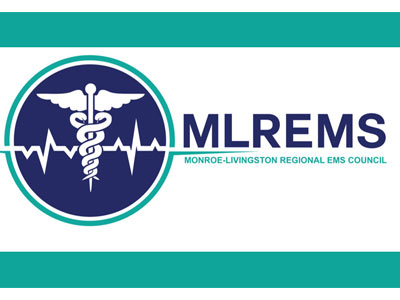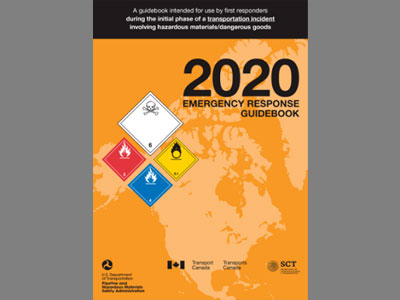 |
Enfermedades por calor (Spanish) Heat Illness |
0.75 |
Este curso cubre los diferentes tipos de enfermedades relacionadas con el calor. Se describe cada enfermedad y se proporcionan detalles de prevención. Además, el curso cubre un ejemplo de estudio de caso para ayudarlo a ponerse en una situación y aplicar lo que ha aprendido. |
 |
Energy and You! |
2.00 |
CalSAC has partnered with the Pacific Gas & Electric Company (PG&E) to bring the Energenius® Out-of-School Time Program to our online training platform. This FREE environmental stewardship curriculum is designed to engage children and youth to think about how they use energy, how energy is measured, paid for, and ways to save energy. Children and youth will understand how they can help reduce the impacts of energy use and production on the environment, and also practice influencing others to take energy-saving actions. Additionally, the curriculum is uniquely and intentionally designed to engage families in energy and water conservation habits.
Energy and You is Activity Guide #1 in the 4-part curriculum Energenius® Out-of-School Time Program. The curriculum and activities are designed to engage children and youth to think about how they use energy, how energy is measured and paid for, and ways to save energy. This course will prepare participants to deliver the activities from the Energy and You Activity Guide as well as connect families to resources to help save energy and money. |
 |
Energy and the Environment |
2.00 |
CalSAC has partnered with the Pacific Gas & Electric Company (PG&E) to bring the Energenius® Out-of-School Time Program to our online training platform. This FREE environmental stewardship curriculum is designed to engage children and youth to think about how they use energy, how energy is measured, paid for, and ways to save energy. Children and youth will understand how they can help reduce the impacts of energy use and production on the environment, and also practice influencing others to take energy-saving actions. Additionally, the curriculum is uniquely and intentionally designed to engage families in energy and water conservation habits.
Energy and the Environment is Activity Guide #2 in the 4-part Energenius® Out-of-School Time Program. The curriculum and activities are designed to engage children and youth in understanding how energy is produced, where energy comes from, and some impacts of energy use and energy production on the environment. This course will prepare participants to deliver the activities from the Energy and the Environment Activity Guide as well as connect families to resources to help save energy and money. |
 |
Ending Extinction: The Basics - Module 2 |
2.50 |
The goal of this course is to lead the fight against extinction by taking a leadership role and collaborating with others to save species from extinction using science-based techniques and fostering collaboration and cooperation. |
 |
Ending Extinction: The Basics - Module 1 |
2.50 |
The goal of this course is to lead the fight against extinction by taking a leadership role and collaborating with others to save species from extinction using science-based techniques and fostering collaboration and cooperation. |
 |
End-of-Life Care (Part 1): Introduction—Palliative Care |
1.00 |
Nursing educator Dr. Jacqueline Coates, DNP, MS, RN, FNP-C, is a retired paramedic who brings her experiences in prehospital medicine and hospice to this introductory lesson in palliative care. The series begins by discussing the concepts of hospice and palliative care. Her expertise and teaching acumen provide several opportunities for you and your team to expound upon the principles she introduces.
The multiple-choice exam is designed to test your knowledge of the material you just reviewed. You have two attempts to gain an 80% or higher on this exam. Please take your time and answer each question carefully. |
 |
EMS Response to Reported Shootings |
1.00 |
We handpicked these two paramedics to speak about the challenges of caring for shooting victims. Eric Rathfelder has a rich educational background and works in an urban setting as a police sergeant. Sean Riemer is a well-respected trainer in a rural setting. The conversation that ensues will spark discussion in your agency whether you are in a rural, suburban, or urban environment.
Final Exam: This multiple-choice exam is designed to test your knowledge of the material you just reviewed. You have two attempts to gain an 80% or higher on this exam. Please take your time and answer each question carefully. |
 |
EMS Patient Handoffs in the Hospital |
0.50 |
|
 |
Employment |
1.50 |
Several factors can contribute to someone being without work. These factors can be societal—a result of community circumstances, or subjective—due to individual traits. This course will explore how self-defeating thoughts and other external factors contribute to periods of unemployment.
Additionally, this course will dive into the process of breaking through these barriers to become employed and the skills required to maintain a job. |
 |
Employee Performance: Resolving Conflicts (Instructor Guide) |
1.50 |
Understanding the different styles of conflict resolution can help you identify the most appropriate process to use when addressing conflicts in the workplace. There are two general types of conflict resolution: indirect and direct.
In this course you will learn to: identify conflict resolution styles, resolve conflicts in the workplace, resolve team conflicts, and identify the communication skills required to resolve conflicts.
This Instructor's Edition of this course includes notes and suggestions to assist you in presenting the material, whether in an in-person classroom setting, or as an instructor-led online or distance-learning course. It also provides you with the answers to questions found in mid-lesson activities, as well as in the quiz that concludes the course. |
 |
Employee Performance: Resolving Conflicts |
1.50 |
Understanding the different styles of conflict resolution can help you identify the most appropriate process to use when addressing conflicts in the workplace. There are two general types of conflict resolution: indirect and direct.
In this course you will learn to: identify conflict resolution styles, resolve conflicts in the workplace, resolve team conflicts, and identify the communication skills required to resolve conflicts. |
 |
Employee Performance: Managing Difficult Employees (Instructor Guide) |
1.00 |
A difficult employee is one whose attitude or behavior is detrimental to an organization. Typically, difficult people are aware of their behavior, but rarely care that their attitude hampers their productivity, or affects the success of their organization.
However, it’s important to remember that a difficult person is not necessarily an individual whom you dislike. Occasionally, the difficulty might not be the individual’s behavior but might instead be your perception of their behavior.
In this course you will learn to: recognize the impact that difficult people can have on an organization, manage a difficult person, and identify difficult personality types, address difficult employees, and mitigate their behavior, and monitor the behavior of a difficult employee, and document ongoing changes in behavior and performance.
This Instructor's Edition of this course includes notes and suggestions to assist you in presenting the material, whether in an in-person classroom setting, or as an instructor-led online or distance-learning course. It also provides you with the answers to questions found in mid-lesson activities, as well as in the quiz that concludes the course. |
 |
Employee Performance: Managing Difficult Employees |
1.00 |
A difficult employee is one whose attitude or behavior is detrimental to an organization. Typically, difficult people are aware of their behavior, but rarely care that their attitude hampers their productivity, or affects the success of their organization.
However, it’s important to remember that a difficult person is not necessarily an individual whom you dislike. Occasionally, the difficulty might not be the individual’s behavior but might instead be your perception of their behavior.
In this course you will learn to: recognize the impact that difficult people can have on an organization, manage a difficult person, and identify difficult personality types, address difficult employees, and mitigate their behavior, and monitor the behavior of a difficult employee, and document ongoing changes in behavior and performance. |
 |
Employee Performance: Feedback (Instructor Guide) |
1.67 |
Giving feedback facilitates organizational growth and development. Feedback helps improve job performance while promoting professional and personal growth in employees.
Managers who know how to give feedback allow employees to advance themselves and grow as individuals and workers. Through proper guidance, employees acquire the necessary skills to meet their job requirements. Feedback helps build interpersonal relationships between managers and employees, while improving their self-esteem and job satisfaction.
In this course you will learn to: identify the focus of feedback, and give and receive feedback effectively, provide positive and constructive feedback, monitor performance after providing feedback, identify communication styles, and manage difficult feedback sessions, and identify when to avoid giving feedback.
This Instructor's Edition of this course includes notes and suggestions to assist you in presenting the material, whether in an in-person classroom setting, or as an instructor-led online or distance-learning course. It also provides you with the answers to questions found in mid-lesson activities, as well as in the quiz that concludes the course. |
 |
Employee Performance: Feedback |
1.67 |
Giving feedback facilitates organizational growth and development. Feedback helps improve job performance while promoting professional and personal growth in employees.
Managers who know how to give feedback allow employees to advance themselves and grow as individuals and workers. Through proper guidance, employees acquire the necessary skills to meet their job requirements. Feedback helps build interpersonal relationships between managers and employees, while improving their self-esteem and job satisfaction.
In this course you will learn to: identify the focus of feedback, and give and receive feedback effectively, provide positive and constructive feedback, monitor performance after providing feedback, identify communication styles, and manage difficult feedback sessions, and identify when to avoid giving feedback. |
 |
Employee Performance: Conflicts (Instructor Guide) |
0.67 |
In any organization, there are individuals with unique personalities and responsibilities. Conflicts are an inevitable part of employee interaction. Knowing how to resolve conflicts when they arise is vital to the well-being of any company.
In this course you will learn to: identify common myths associated with workplace conflicts, common reasons that conflicts arise, and types of workplace conflict, and distinguish between conflict management and conflict resolution.
This Instructor's Edition of this course includes notes and suggestions to assist you in presenting the material, whether in an in-person classroom setting, or as an instructor-led online or distance-learning course. It also provides you with the answers to questions found in mid-lesson activities, as well as in the quiz that concludes the course. |
 |
Employee Performance: Conflicts |
0.67 |
In any organization, there are individuals with unique personalities and responsibilities. Conflicts are an inevitable part of employee interaction. Knowing how to resolve conflicts when they arise is vital to the well-being of any company.
In this course you will learn to: identify common myths associated with workplace conflicts, common reasons that conflicts arise, and types of workplace conflict, and distinguish between conflict management and conflict resolution. |
 |
Employee Performance: Communication (Instructor Guide) |
1.00 |
Communication is effective when a listener clearly understands a speaker’s message. Good communication fosters a productive exchange of ideas while minimizing the possibility of confusion or misunderstanding.
When trying to communicate with a difficult employee, you must be willing to work with that person to correct the problematic behavior. Openly discussing the behavior can help you find a mutually acceptable solution.
In this course you will learn to: communicate clearly and effectively by using verbal and nonverbal communication, and improve your listening skills, and communicate with difficult supervisors and coworkers, take a proactive approach when dealing with difficult employees, and identify types of employee dismissals.
This Instructor's Edition of this course includes notes and suggestions to assist you in presenting the material, whether in an in-person classroom setting, or as an instructor-led online or distance-learning course. It also provides you with the answers to questions found in mid-lesson activities, as well as in the quiz that concludes the course. |
 |
Employee Performance: Communication |
1.00 |
Communication is effective when a listener clearly understands a speaker’s message. Good communication fosters a productive exchange of ideas while minimizing the possibility of confusion or misunderstanding.
When trying to communicate with a difficult employee, you must be willing to work with that person to correct the problematic behavior. Openly discussing the behavior can help you find a mutually acceptable solution.
In this course you will learn to: communicate clearly and effectively by using verbal and nonverbal communication, and improve your listening skills, and communicate with difficult supervisors and coworkers, take a proactive approach when dealing with difficult employees, and identify types of employee dismissals. |
 |
Emergency Response Guidebook Activity |
1.50 |
This course is an activity that requires the first responder to utilize the Emergency Response Guidebook to solve a variety of problems. The solution to each of these problems can be found using the 2020 Emergency Response Guidebook Version. Students will need to have a copy of the Emergency Response Guidebook Version 2020 to complete this activity. A 2020 Emergency Guidebook PDF is available for download in this lesson if a copy of the book is not available to the student.
It should be noted that this is an in-service training activity. The student must have prior knowledge and training regarding the Emergency Response Guidebook prior to engaging this activity.
|
 |
Emergency Protocols for School Settings |
1.25 |
This course will take you through various topics related to emergency protocols in schools. You will learn how an Emergency Operations Plan is created and implemented. This course will help you understand your role in supporting before, during, and after school threats and hazards. This course will also explain the various assessments schools use to determine which threats and hazards are necessary to prepare for, how to collaborate with local and state organizations, and what items are necessary to include in an Emergency Operations Plan. |
 |
Emergency First Aid |
1.00 |
Improving the safety of your workers by training them in First Aid, CPR, and AED is important. In this course, participants will learn some first aid basics, how to provide First Aid for a few medical, injury, and environmental injuries, and how to provide CPR and use an AED. Participants will also learn about training options that are available to them through the American Heart Association.
Note: Completion of this course does not result in first aid, CPR, or AED use certification. For information on how to become certified, visit the American Heart Association CPR & First Aid website by visiting https://cpr.heart.org/. |
 |
Emergency Animal Recall - Tigers |
2.00 |
Welcome to Emergency Animal Recall. This collection consists of an overview course which covers the fundamentals of Emergency Recall training for exhibit animals, including:
What exactly is Emergency Animal Recall, and why is it necessary?
What are the benefits of Emergency Animal Recall?
How do you generate support within your organization for a training program, and how do you decide which animals should be trained first?
What equipment will you need, and what preparations will you need to make?
What is the general outline of an Emergency Recall training program, and how do you maintain the conditioning once it has been established?
After completing this Overview, you can continue with the species-specific Tigers Emergency Animal Recall course. |
 |
Emergency Animal Recall - Polar Bears |
2.00 |
Welcome to Emergency Animal Recall. This Overview course covers the fundamentals of Emergency Recall training for exhibit animals, including:
What exactly is Emergency Animal Recall, and why is it necessary?
What are the benefits of Emergency Animal Recall?
How do you generate support within your organization for a training program, and how do you decide which animals should be trained first?
What equipment will you need, and what preparations will you need to make?
What is the general outline of an Emergency Recall training program, and how do you maintain the conditioning once it has been established?
This is the first course in a series. After completing this Overview, you should continue with the species-specific Polar Bear Emergency Animal Recall course. |
 |
Emergency Animal Recall - Lions |
2.00 |
Welcome to Emergency Animal Recall. This collection consists of an overview course which covers the fundamentals of Emergency Recall training for exhibit animals, including:
What exactly is Emergency Animal Recall, and why is it necessary?
What are the benefits of Emergency Animal Recall?
How do you generate support within your organization for a training program, and how do you decide which animals should be trained first?
What equipment will you need, and what preparations will you need to make?
What is the general outline of an Emergency Recall training program, and how do you maintain the conditioning once it has been established?
After completing this Overview, you can continue with the species-specific Lions Emergency Animal Recall course. |


























